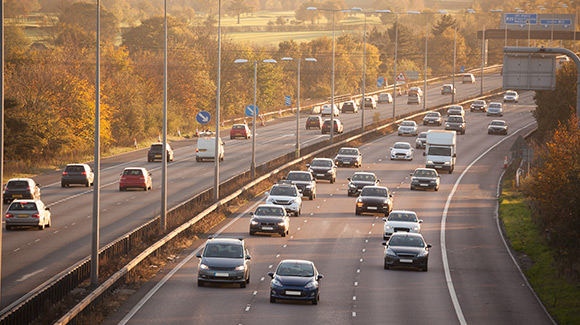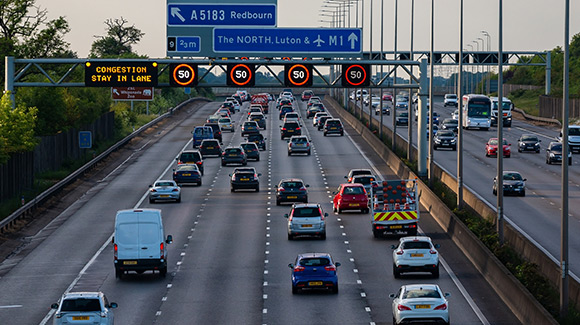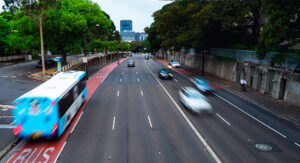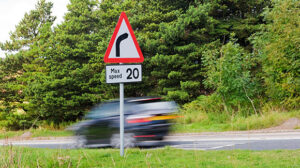Home » Driving Advice » Motorway Driving Tips
Motorway driving: Top tips on how to keep safe
Many motorists feel nervous or apprehensive about motorway driving. Some will even avoid motorways altogether. Maybe it’s because of the speed of the traffic, the fear of breaking down, or whether motorists feel they lack the vital skills needed for motorway driving.
But you may be surprised to know that UK motorways are amongst the safest types of road to drive on. And since 2018, learner drivers can now have motorway lessons with an approved driving instructor. This gives them the skills and experience they need to drive safely on motorways.
But if you’re still feeling anxious, this article provides some useful tips to help you overcome your fear of motorway driving.

Plan your journey in advance
Planning your journey beforehand can help ease a lot of the stress and pressure associated with motorway driving.
Carry out some basic checks on your vehicle to ensure it is safe and roadworthy. Check the lights, brakes, tyres, windscreen wipers, and fluid levels.
Estimate how long the journey will take and factor in any rest breaks, drop-offs, and any potential delays. Try and avoid driving on the motorways in poor weather conditions like snow, ice, heavy wind, and rain. But, if you do need to make a trip, allow yourself plenty of time to complete your journey.
Make sure you know the junction numbers you need when joining or leaving the motorway. Also, if you’re using a sat-nav, make sure it is up to date to reflect any changes to the roads.
Finally, familiarise yourself with the motorway section of the Highway Code, which provides, information, advice, guidance, and rules when driving on motorways.
Avoid driving with tiredness
Most sleep-related accidents happen on motorways and dual carriageways, so you should avoid driving if you are feeling tired.
If you are planning a longer journey, take regular breaks and even share some of the driving if you’re accompanied by an experienced driver. Avoid taking longer journeys at night as you will naturally feel more tired and will not be as alert.
Avoid in-car distractions
It’s important to not allow yourself to be distracted whilst you’re behind the wheel. In-car distractions are a major cause of road accidents, so staying focused will help keep you and other road users safe.
Using a hand-held mobile phone while driving is not only dangerous but also illegal. Even if you’re not using your phone, a text message or notification can cause a distraction and force you to take your eyes off the road.
So before setting out on your journey, switch off your phone and put it somewhere out of sight, like the glove compartment.
Passengers can also cause a distraction, especially when you’re a new driver. The last thing you need is ‘back-seat’ passengers telling you how to drive or encouraging you to put your foot down. Although if you’re new to motorway driving, you may find it reassuring to have an experienced driver with you in the vehicle.
You should also remove any loose items that may rattle or move around, causing a distraction.
Motorway speed limits
For most vehicles, the motorway speed limit is 70 mph. But in some cases, the speed limit may be reduced for roadworks, in response to a hazard or incident, to improve traffic flow or even to reduce pollution.
You must not drive faster than the speed limit. It is in place to help keep you and other road users safe. The speed limit is the maximum speed you can travel at, and you may need to reduce your speed depending on the road conditions.
Joining the motorway
You will join the motorway via a slip road. The slip road allows you to adjust your speed as appropriate to match the traffic that you will be merging with on the motorway. The traffic you are merging with has the priority. This means that you should not impede the traffic or do anything that forces other drivers to react.
As you approach the motorway, you should be assessing the conditions as soon as possible. This means accelerate where the traffic is free-flowing, or slow down if it is slow-moving as this could be a sign of congestion ahead.
Check for traffic behind you by looking over your right shoulder, as well as using your mirrors. Look for gaps in the approaching traffic where you can safely join the motorway.
Once you have decided where you will merge with the traffic, indicate to the right, to make other road users aware that you intend to join the motorway. You may find that other drivers adjust their speed or position accordingly to help you.
Once you have joined the motorway, stay in the left lane, and cancel your indicator.
Motorway lanes
Motorways can have two, three, or even four lanes. You should always stay in the left lane unless you are overtaking. Hogging the middle lane may cause congestion and force other drivers to illegally overtake on the inside lane if they become frustrated.
Always maintain a safe driving distance between you and the vehicle in front. There should be at least a two-second gap on dry roads. This gap should be at least doubled on wet roads and extended further on icy roads.
Only overtake if you are certain it is safe and legal to do so. Once you’ve overtaken, move back to the left-hand lane, when it is safe to do so.
You should never overtake on the left unless there is slow-moving traffic where all lanes are moving at similar speeds. In this situation, where traffic is moving faster in the lane you are in, you can pass traffic in other lanes to keep up with the traffic flow. You must not weave in and out of lanes to overtake though.
Smart motorways
Smart motorways use technology to control and manage the flow of traffic to help it move more smoothly. When it’s busy they can adjust the speed limit accordingly, which is displayed on a digital sign above the motorway lane.

You cannot use a motorway lane with a red X marked on digital signs above it. It’s illegal to do so and if caught, you could receive a fixed penalty of up to £100 and three points on your licence.
Variable speed limits can be set across various stretches of the motorway when it’s busy, in combination with a red X digital sign or in response to a hazard or incident. You must not exceed the speed limit indicated within a red circle on a digital sign. Doing so could land you a fine.
If there are no speed limits displayed on the digital signs, then the national speed limit applies.
Using the hard shoulder
The hard shoulder is an area by the verge of the motorway that runs alongside the left-hand lane. It is slightly narrower than a normal motorway lane and can be identified by a solid white unbroken line.
Although the hard shoulder is for emergency use only, you may be able to drive on the hard shoulder in certain situations. If this is the case, it will be indicated on the digital signs above it. If there is nothing displayed above it or you see a red X displayed, then the hard shoulder is for emergency use only.
Can learner drivers drive on the motorway?
Learner drivers can drive on the motorway if they are accompanied by an approved driving instructor, in a vehicle fitted with dual controls, correctly displaying L plates.
If you’re recently passed your driving test, then taking out a black box insurance policy may help you feel safer on the roads. A black box device collects data on how you drive. This data is then used to calculate a driving score, allowing you to improve your driving style, throughout the year.
Final thoughts
Driving on a motorway may feel intimidating, especially if you’re a young or inexperienced driver. But hopefully, the tips provided in this article will help you to feel more confident about motorway driving.
Share this article
Table of Contents
More posts

What Happens If You Drive In A Bus Lane By Mistake?

What Happens If You Speed With A Black Box?

UK Speed Limits: Here’s What You Need To Know

